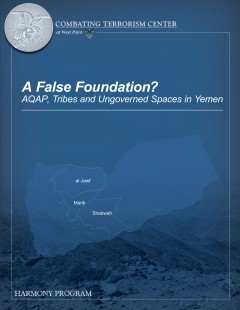The report attempts to disaggregate the threat posed by al-Qa`ida in the Arabian Peninsula from the sources of instability surrounding it, by examining the group’s strategy, tactics and objectives from a local perspective. The report specifically concentrates on events and actors in Yemen’s Eastern governorates, often described as the most “tribal” parts of Yemen and an epicenter of AQAP activity. This discussion of the tribes of Marib and al-Jawf is informed by 12 months of research conducted in Yemen including fieldwork in the governorate of Marib. The author’s network of contacts and dozens of interviews with tribal leaders and tribesmen suggest that although tribes have long been cited as a primary resiliency mechanism for AQAP, the group enjoys no formal alliance with tribes in either Marib or al-Jawf and there is ample evidence to suggest that, contrary to popular analysis, the group’s strength and durability does not stem from Yemen’s tribes. By refocusing the emphasis on the group’s operations in Yemen, this report provides a new assessment of AQAP’s sources of resiliency, the constraints and opportunities inherent in the local political context and implications for the group’s regional and global ambitions.
 Skip to content
Skip to content

